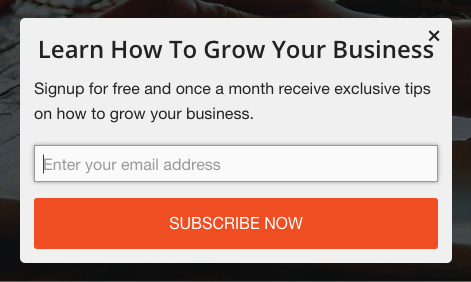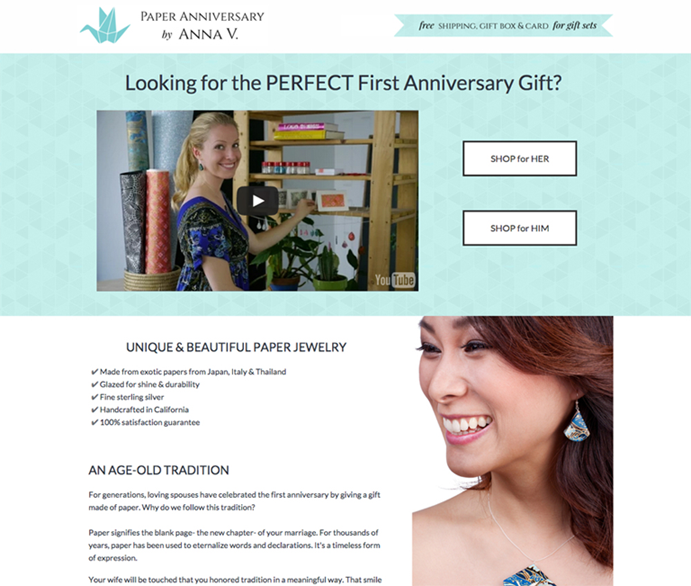There are around half a million small businesses being created every month. That’s in the US alone.
That’s a mind-boggling number. How are you ever supposed to stand out and compete? It’s enough to make you feel like you made a big mistake starting your own business. That is if the lifestyle hasn’t already made you feel that way.
However, there is good news. Most of these business owners don’t know a thing about marketing. They think putting a site up is good enough, and that people will eventually find them and buy from them. They’re wrong.
Building a software, sourcing a product, or creating a service, is just half the battle. In a world where every niche is competitive, you need to focus on marketing to get the word out.
In this post, we’ll have a look at 5 ways you can kick start your marketing and start growing your online business.
Start a Blog
When you start a new business, you have two major problems. The first is it’s really hard for people to find you. No matter how well you optimize your site for search engines, it won’t suddenly start ranking. SEO takes a long time to kick in.
Second, even if people find you, it’s hard to convince them to buy from you immediately. You need to convince them they have a problem or need, you need them to believe that your product will solve that problem, and you need to show them that your product is better than any others out there.
So, to sum up, most people won’t find you. And of the few that do, most won’t buy from you. How do you get around these two problems? The answer is content marketing.
Blogs are the most popular form of content marketing because they are faster and easier to produce than other forms like videos, podcasts, books and so on. With blog posts, you can target long tail keywords and address issues that potential customers are searching for.
Here is an example from NCIX where they write a review on a Logitech product they carry. Their customers may be searching for this and end up right on their blog.
By consistently producing helpful content, and optimizing it for search engines, your blog will help you rank higher and start attracting organic traffic. High-quality blog posts will also impress potential customers, and they’ll start to trust your brand because of all the free value you’re giving them through your blog.
Eventually, when your customers are ready to buy, they’ll think of you first and they’ll come to you for a solution. It may take weeks, months, or even years, but if you keep at it your blog will become a valuable asset that consistently generates new leads and customers for you.
Build a Mailing List
The more they read your blog, the more your potential customers will trust you. It’s unlikely that they’ll immediately want to buy from you after reading one post, so you want to keep them coming back after each post.
The best way to do that is to build a mailing list. When people subscribe to your list, you have a direct avenue to send them new content and slowly sell them on your product.
Start by signing up for email marketing software. There are lots of options out there, like Mailchimp, Aweber, GetResponse, or much more.
Next, you want to create subscription forms on your site. Most softwares have a form builder that allows you to design a form and copy and paste the generated code on your blog. The end of a blog post is a good place to capture subscribers.
You can also use something like Optin Monster to create popups, and then integrate it with your marketing software.
Now that you have subscribers you need to nurture them. Keep sending them content to engage them, build trust, and bring them back to your site. The simplest way is to send subscribers a regular digest of your blog content. Your email software should have instructions on how to hook up your RSS feed and automate this.
A more advanced method is to segment your subscribers based on their interests and set up auto-responders for each segment. These are automated emails that go out to subscribers based on the schedule you set up. You can create a series of emails that build interest in your product and culminate in an offer.
For example, let’s say you sell clothing for men and women. You can segment your subscribers based on gender and send each segment appropriate messages and offers for your products. This is a very basic scenario, and you can get creative and build some very targeting and highly converting campaigns.
Experiment With Ads
Starting a blog and building an email list won’t give you immediate results. It takes time, but it’s totally worth it. If you’re looking for some short-term results, paid ads are a good bet.
Of course, paid ads are competitive, so if you don’t do them right you may end up spending a lot of money with very little reward. What you want to do is run some small-scale experiments, and determine what keywords, channels, and audiences, to focus on before you make any large investments.
Start by picking a channel to advertise on. Google Adwords is pretty easy to get started on but there are others like social media sites, and various display networks.
Next, figure out what you want to advertise and who to target. This is the important part, because most beginners use a spray and pray method to reach as many people as they can, and they leak money in the process.
Let’s go back to the example of the clothing retailer. You don’t want to target keywords like clothing or fashion because that’s way too broad. Instead, you want to select a category or segment of products and bring traffic to them by targeting long tail keywords like ‘business casual menswear’.
The more targeted your keywords are, the better your results. Don’t forget to use Google’s conversion tracking to see which keywords and ads lead to actual leads or customers. Start with a small budget of $50 – $100, and keep optimizing your campaign by dropping keywords and ads that don’t work, and testing variations of the ones that do.
With small-scale experiments like this, you can determine if the channel is a profitable one. If it is, increase the budget and then move on to the next channel.
Create Landing Pages
A problem you might encounter with ads is finding that people are clicking on them but not buying anything when they reach your site. You’ve just paid for all those clicks, and you’ve got targeted traffic, but you’re not seeing returns.
This is because, when people reach your site, they get distracted. There are links in the navigation, in the footer, and maybe even in the sidebar. They might click on these links, browse around on your site, and then decide to come back and check it out later. The moment they leave, they’ve forgotten about you.
To counteract this, you need to direct your ads to specialized landing pages. Using software like Unbounce, you can create landing pages with the sole purpose of converting ad traffic into leads or customers.
It’s important to create your landing page with your ad in mind. Since the ad promises something, the landing page must live up to that promise. When people click on an ad for business casual menswear, they expect to see more about that on the landing page.
The advantage of a landing page is that it removes all distractions and puts the focus on getting traffic to sign up or purchase something. There are no links in the header and footer, and there is only one call to action. That leaves visitors with two options, convert or bounce.
To further increase the effectiveness of your landing pages, A/B test them for different messages. This way you can optimize your page and increase conversion rates, which in turns increase your overall ROI for that campaign.
Recruit Affiliates
So far we’ve been discussing tactics that require you to put in a lot of work and create your own content and campaigns. But what if you could get others to do this for you?
That’s where affiliate marketing comes in. By creating a network of affiliates, you can get them to promote your products and give them a commission in return. The beauty of this is you’re only paying them if they bring you customers, so unless you get the math wrong you can’t lose money here.
To make things easier, use an affiliate marketing software. This will give you the tools to sign on affiliates and track their performance. Each affiliate gets a unique link that they can share with their followers. The software will then track how many people purchase your product with that link and automatically pay out the affiliate.
Your customers will most likely be the biggest advocates of your product, so get them to join your affiliate program. Also, reach out to influencers like popular bloggers and people will large social media followings in your niche. These people have thousands of followers who will trust their product recommendations, so getting them on your program can bring in lots of sales.
Start Marketing
There are so many ways to market a business, but the 5 methods I discussed here can be implemented even if you have a very small team and a tight budget.
The important thing is to just start. Set aside some time, pick one of the strategies, and put them in place. Once you’ve got the systems set up, and the groundwork done, you automate the repeatable steps using the software I’ve suggested and outsource the manual stuff.



